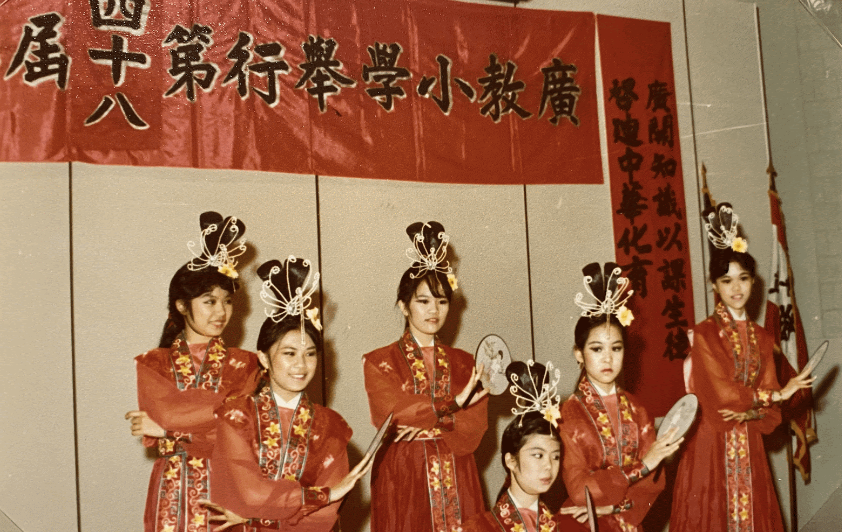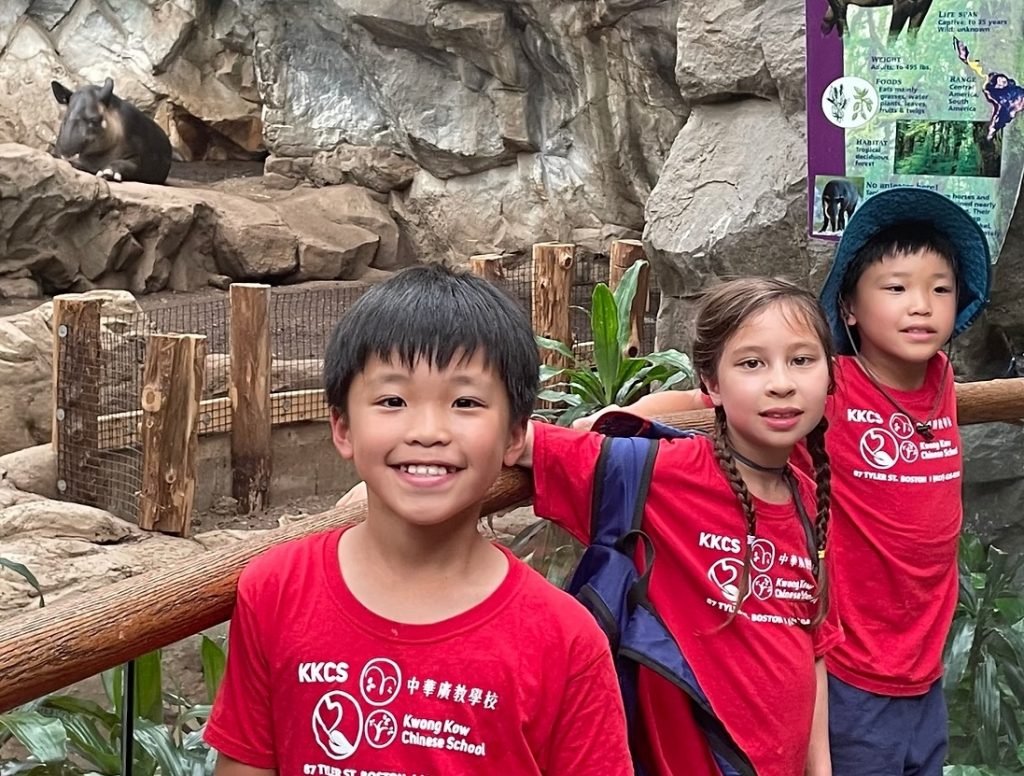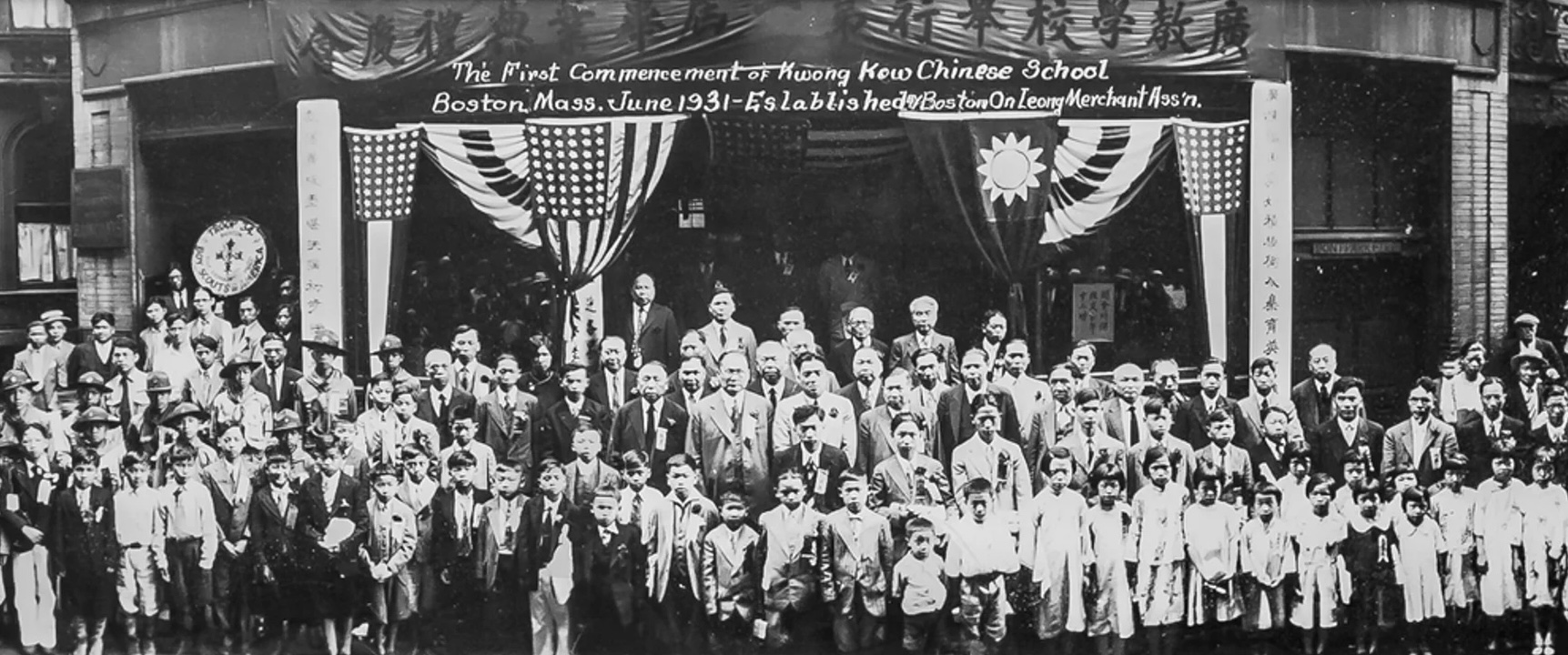The Kwong Kow Chinese School’s first graduation, 1931. Courtesy of the Chinese Historical Society of New England.
Founded in 1916 by the On Leong Merchants Association, the Kwong Kow Chinese School is the oldest Chinese school in Boston and one of the longest-running on the East Coast. Since its founding, it has taught more than 20,000 children from the metro area. Originally located in an apartment building at 2 Tyler Street, the school was created “to establish an educational institution to help maintain Chinese heritage among overseas Chinese.” Historically, it has played a vital role in cultivating a sense of belonging among its members in the Chinatown community and beyond.

The name of the school was originally spelled “Quong Kow,” which roughly translates to “Chinese Universal School.” Initially affiliated with the Guangdong provincial government and later with the Nationalist government, the school taught Chinese language and cultural activities to the youth of Chinatown, most of whose families hailed from the Guangdong province in southern China. Kwong Kow began as a weekday evening school, but in 1931 it moved to 20 Oxford Street and expanded from afterschool sessions to having weekend classes, recreation activities, graduation ceremonies, and more. Formerly a garment factory, 20 Oxford Street was home to the school for roughly 50 years, from about 1931 to 1981.
After World War II, the Kwong Kow School and the Chinatown community began to change as new immigration policies admitted more women and families. The repeal of the Chinese Exclusion Act in 1943 ended the earlier ban on the entry of Chinese laborers, while the War Brides Acts of 1945 and 1946 enabled the wives and children of US servicemen to join their (mainly Chinese American) husbands in the US. The growing number of immigrant families increased demands for traditional education, which further cemented the importance of the Kwong Kow School to the community.
The formation of the People’s Republic of China (PRC) in 1949 further solidified the community. As migration to the communist mainland became more difficult during the Cold War, some who had hoped to return found that option closed off. Realizing they would likely never return to China, these immigrants now looked to Chinatown as their cultural home, and the Kwong Kow School as a key vehicle for preserving Chinese language and culture for the next generation.
In the early 1960s, the US allowed several thousand Chinese fleeing the PRC to come to America via the British colony of Hong Kong. With the arrival of these newcomers, the Kwong Kow School switched its primary teaching language from Taishanese (a regional dialect in Guangdong Province) to Cantonese (the predominant language of Guangdong province and Hong Kong). In 1976, the school moved to 90 Tyler Street where it renovated the building to provide additional classrooms for its 600-700 students.

The Kwong Kow School now operated seven days a week, offering classes in Chinese music, martial arts, painting, dance, Chinese languages, and other subjects. After 1978, when the PRC opened its borders, the school began attracting new immigrants from the north and west of China as well as migrants from Taiwan, Vietnam, Cambodia, and the Philippines. To accommodate this diverse group of newcomers, the school later added classes in Mandarin.
Former students who attended Kwong Kow in the 1970s shared their memories of the school. According to Helen Mah and Yolanda Tong, Kwong Kow classes began with a traditional greeting of bowing to the teacher and other students. This ritual taught students to respect others while also integrating Chinese culture into everyday routines. The main teachings included culture and language classes. Tong recalls having to memorize pages of cultural textbooks and recite the content in front of the class. Another significant memory for both alumnae was the incorporation of traditional Chinese ink calligraphy. This activity allowed the students to practice their character writing skills while also learning about the history of the practice. For those who were interested, the school offered classes on singing and dance.
Kwong Kow remained at 90 Tyler Street until 2000, when a legal dispute developed between the school and the building’s owner, the Chinese Consolidated Benevolent Association. Eventually, the school was forced to vacate the premises within 36 hours with only a day’s notice. Fung Ming Lee, the school administrator at the time, said that she would never forget that day. More than one hundred people from the community worked through the night, helping faculty and staff shuttle supplies to temporary sites. This conflict sparked a demonstration of 1500 Kwong Kow alumni, students, and supporters in the streets of Chinatown.

In the years following the eviction, the school moved through eight different buildings before finally settling in its current home at 87 Tyler Street in 2007. During that time, Kwong Kow purchased the Tyler Street site and raised roughly six million dollars to build a new six-story school. Felix Lui, then chairman of the Kwong Kow board of trustees, noted, “to build a school from scratch is something we are all proud of.” The school, which includes a performing arts center, a computer lab, a library, and a dance studio, has resided at this location ever since.
Dating back more than a century, the Kwong Kow School has played a central role in the preservation of Chinese language and culture in Boston. The school was also an important early model for the multicultural programming that can be found across the city and metro region today.
Research and writing for this profile was the work of Grace Concannon, Alisa Cufone, Hi’ilei Leong, and Kendall Torres, students in Professor Hongyan Yang’s 2024 course, Making American Landscapes: Building and Living in Asian America. This Boston College course was taught in partnership with the Chinatown Community Land Trust.
Works Cited
Kwong Kow Chinese School, About Us: History.
Lee, Alice. Stories of Chinatown, Asian Community Development Corporation blog, January 29, 2019.
Liu, Michael. Forever Struggle: Activism, Identity, and Survival in Boston’s Chinatown, 1880-2018, 161-62.
Mah, Helen. Email message to author (Alisa Cufone). March 23, 2024.
Tan, L. Kim. “March Will Support Chinatown School,” Boston Herald, December 11, 1999.
Thompson, Richard. “With School OK, She Can Retire; Venerable Director Sees Kwong Kow Move into New Home,” Boston Globe, December 16, 2007.
Tong, Yolanda. Email message to author (Alisa Cufone). March 22, 2024.
Yee, Cynthia. “If Hudson Street Could Talk,” Asian Community Development Corporation blog, February 14, 2018.


